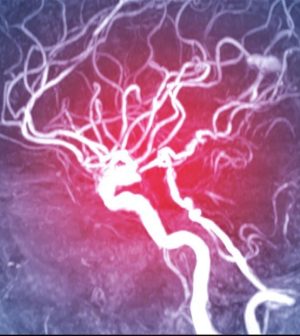- Navigating Your Midlife Crisis: Embracing New Possibilities
- City Raccoons Showing Signs of Domestication
- Mapping the Exposome: Science Broadens Focus to Environmental Disease Triggers
- One Week Less on Social Media Linked to Better Mental Health
- Your Brain Changes in Stages as You Age, Study Finds
- Some Suicide Victims Show No Typical Warning Signs, Study Finds
- ByHeart Formula Faces Lawsuits After Babies Sickened With Botulism
- Switch to Vegan Diet Could Cut Your Greenhouse Gas Emissions in Half
- Regular Bedtime Does Wonders for Blood Pressure
- Dining Alone Could Mean Worse Nutrition for Seniors
Brain Zap Treatment Could Get Arms, Hands Moving After Head Injury

Patients who lose the use of their hands and arms after a stroke or traumatic brain injury could regain some function through deep brain stimulation (DBS), new research demonstrates.
DBS involves surgical placement of electrodes to deliver electrical impulses to areas of the brain regulating specific activity. It is often used to treat control movement problems associated with Parkinson’s disease.
“Arm and hand paralysis significantly impacts the quality of life of millions of people worldwide,” said corresponding author Elvira Pirondini, an assistant professor of physical medicine at the University of Pittsburgh. “Currently, we don’t have effective solutions for patients who suffered a stroke or traumatic brain injury, but there is growing interest in the use of neuro-technologies that stimulate the brain to improve upper-limb motor functions.”
The team proposed using DBS to stimulate a structure deep within the brain called the motor thalmus, a key hub of movement control. Because this had never been done before, they first tested it in monkeys, which have the same links as people between the motor cortex and muscles.
As soon as the stimulation was turned on, the monkeys had significantly better muscle activation and grip. No involuntary movement was seen.
Then, they repeated the procedure using the same stimulation settings in a human volunteer who was already set to undergo DBS implantation to help with arm tremors caused by a brain injury that severely paralyzed both arms.
Again, range and strength of motion immediately improved as soon as the stimulation was turned on. The participant was able to lift a moderately heavy weight and reach, grasp and lift a drinking cup more efficiently and smoothly than without the stimulation.
The promising findings were published Oct. 1 in the journal Nature Communications.
“DBS has been life-changing for many patients,” senior study author Dr. Jorge González-Martinex, director of Pitt’s epilepsy and movement disorders program, said in a university news release. “It offers new hope to millions of people worldwide.”
Their team is now working to test the long-term effects of DBS and to learn whether continuing stimulation could further boost arm and hand function in patients with traumatic brain injury or stroke.
More information
There’s more about deep brain stimulation at the American Brain Foundation.
SOURCE: University of Pittsburgh, news release, Oct. 1, 2024
Source: HealthDay
Copyright © 2025 HealthDay. All rights reserved.










